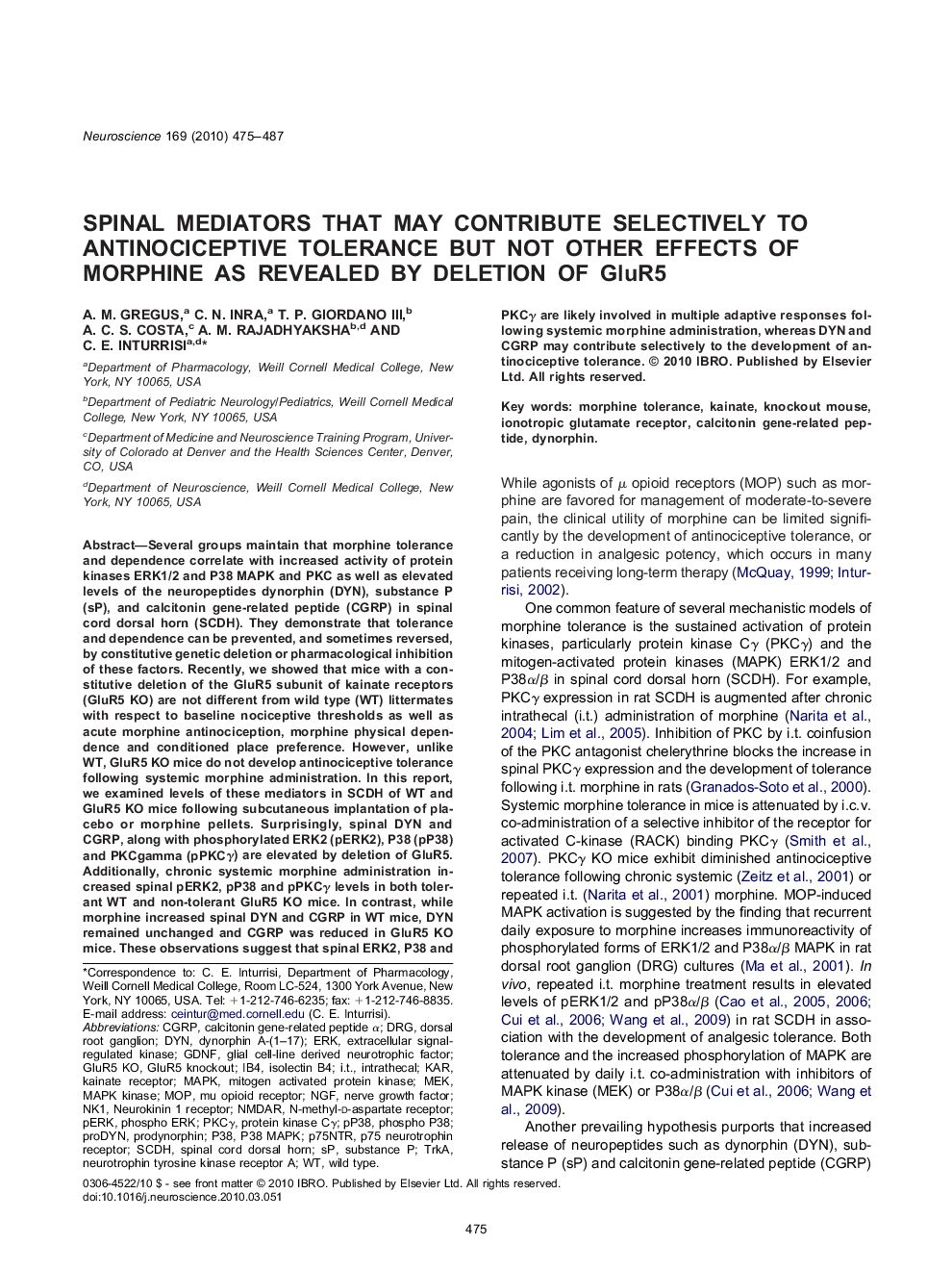| کد مقاله | کد نشریه | سال انتشار | مقاله انگلیسی | نسخه تمام متن |
|---|---|---|---|---|
| 4339448 | 1295753 | 2010 | 13 صفحه PDF | دانلود رایگان |

Several groups maintain that morphine tolerance and dependence correlate with increased activity of protein kinases ERK1/2 and P38 MAPK and PKC as well as elevated levels of the neuropeptides dynorphin (DYN), substance P (sP), and calcitonin gene-related peptide (CGRP) in spinal cord dorsal horn (SCDH). They demonstrate that tolerance and dependence can be prevented, and sometimes reversed, by constitutive genetic deletion or pharmacological inhibition of these factors. Recently, we showed that mice with a constitutive deletion of the GluR5 subunit of kainate receptors (GluR5 KO) are not different from wild type (WT) littermates with respect to baseline nociceptive thresholds as well as acute morphine antinociception, morphine physical dependence and conditioned place preference. However, unlike WT, GluR5 KO mice do not develop antinociceptive tolerance following systemic morphine administration. In this report, we examined levels of these mediators in SCDH of WT and GluR5 KO mice following subcutaneous implantation of placebo or morphine pellets. Surprisingly, spinal DYN and CGRP, along with phosphorylated ERK2 (pERK2), P38 (pP38) and PKCgamma (pPKCγ) are elevated by deletion of GluR5. Additionally, chronic systemic morphine administration increased spinal pERK2, pP38 and pPKCγ levels in both tolerant WT and non-tolerant GluR5 KO mice. In contrast, while morphine increased spinal DYN and CGRP in WT mice, DYN remained unchanged and CGRP was reduced in GluR5 KO mice. These observations suggest that spinal ERK2, P38 and PKCγ are likely involved in multiple adaptive responses following systemic morphine administration, whereas DYN and CGRP may contribute selectively to the development of antinociceptive tolerance.
Journal: Neuroscience - Volume 169, Issue 1, 11 August 2010, Pages 475–487